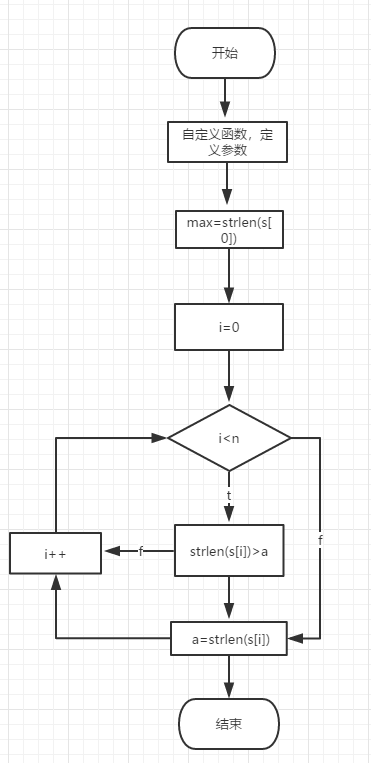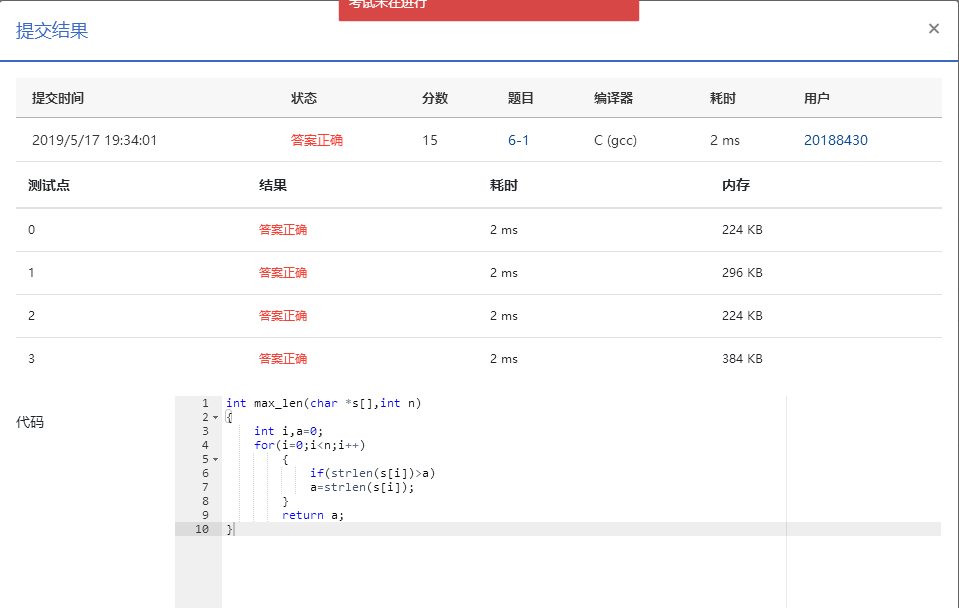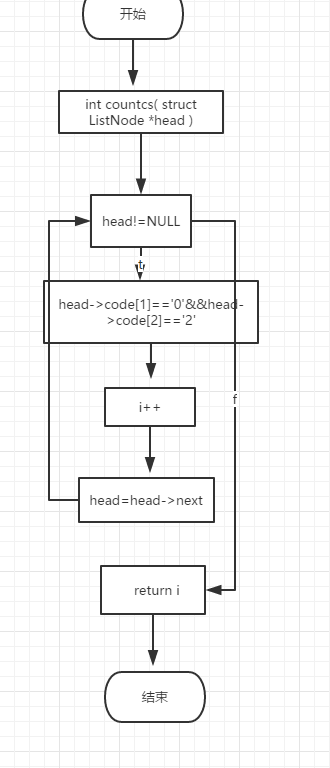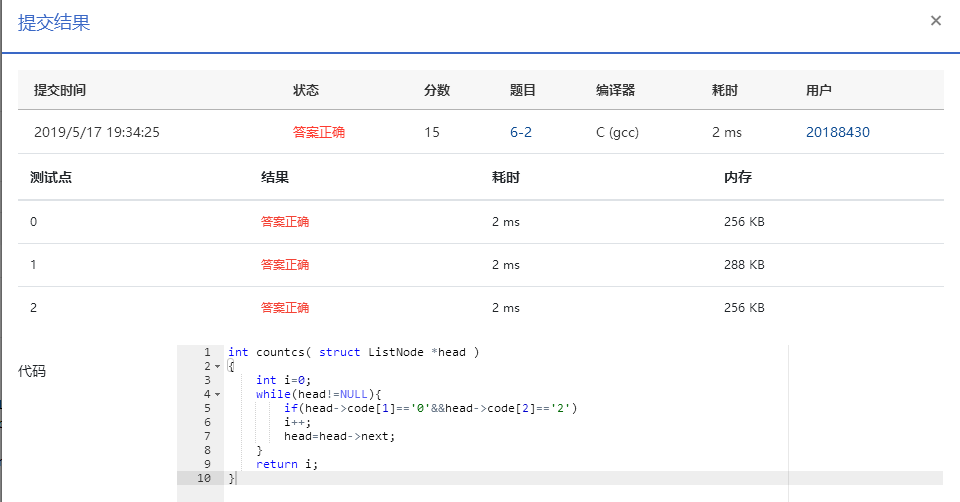第十二周作业
| 这个作业属于那个课程 | C语言程序设计II |
|---|---|
| 这个作业要求在哪里 | https://edu.cnblogs.com/campus/zswxy/MS/homework/3239 |
| 我在这个课程的目标是 | 指针数组,数组指针,指针函数,函数指针,二级指针 |
| 这个作业具体在那个方面帮助我实现目标 | 自主编程 |
| 参考文献 | C语言程序设计II |
6-1 计算最长的字符串长度 (15 分)
本题要求实现一个函数,用于计算有n个元素的指针数组s中最长的字符串的长度。
函数接口定义:
int max_len( char *s[], int n );
其中n个字符串存储在s[]中,函数max_len应返回其中最长字符串的长度。
裁判测试程序样例:
#include <stdio.h>
#include <string.h>
#include <stdlib.h>
#define MAXN 10
#define MAXS 20
int max_len( char *s[], int n );
int main()
{
int i, n;
char *string[MAXN] = {NULL};
scanf("%d", &n);
for(i = 0; i < n; i++) {
string[i] = (char *)malloc(sizeof(char)*MAXS);
scanf("%s", string[i]);
}
printf("%d
", max_len(string, n));
return 0;
}
/* 你的代码将被嵌在这里 */
输入样例:
4
blue
yellow
red
green
输出样例:
6
实验代码:
int max_len(char *s[],int n) { int i,a=0; for(i=0;i<n;i++) { if(strlen(s[i])>a) a=strlen(s[i]); } return a; }
实验思路:

实验结果:

实验题目:
6-2 统计专业人数 (15 分)
本题要求实现一个函数,统计学生学号链表中专业为计算机的学生人数。链表结点定义如下:
struct ListNode {
char code[8];
struct ListNode *next;
};
这里学生的学号共7位数字,其中第2、3位是专业编号。计算机专业的编号为02。
函数接口定义:
int countcs( struct ListNode *head );
其中head是用户传入的学生学号链表的头指针;函数countcs统计并返回head链表中专业为计算机的学生人数。
裁判测试程序样例:
#include <stdio.h>
#include <stdlib.h>
#include <string.h>
struct ListNode {
char code[8];
struct ListNode *next;
};
struct ListNode *createlist(); /*裁判实现,细节不表*/
int countcs( struct ListNode *head );
int main()
{
struct ListNode *head;
head = createlist();
printf("%d
", countcs(head));
return 0;
}
/* 你的代码将被嵌在这里 */
输入样例:
1021202
2022310
8102134
1030912
3110203
4021205
#
输出样例:
3实验代码:
int countcs( struct ListNode *head ) { int i=0; while(head!=NULL){ if(head->code[1]=='0'&&head->code[2]=='2') i++; head=head->next; } return i; }
实验思路:

实验结果:

实验题目:
本题要求实现两个函数,分别将读入的数据存储为单链表、将链表中偶数值的结点删除。链表结点定义如下:
struct ListNode {
int data;
struct ListNode *next;
};
函数接口定义:
struct ListNode *createlist();
struct ListNode *deleteeven( struct ListNode *head );
函数createlist从标准输入读入一系列正整数,按照读入顺序建立单链表。当读到−时表示输入结束,函数应返回指向单链表头结点的指针。
函数deleteeven将单链表head中偶数值的结点删除,返回结果链表的头指针。
裁判测试程序样例:
#include <stdio.h>
#include <stdlib.h>
struct ListNode {
int data;
struct ListNode *next;
};
struct ListNode *createlist();
struct ListNode *deleteeven( struct ListNode *head );
void printlist( struct ListNode *head )
{
struct ListNode *p = head;
while (p) {
printf("%d ", p->data);
p = p->next;
}
printf("
");
}
int main()
{
struct ListNode *head;
head = createlist();
head = deleteeven(head);
printlist(head);
return 0;
}
/* 你的代码将被嵌在这里 */
输入样例:
1 2 2 3 4 5 6 7 -1
输出样例:
1 3 5 7 实验代码
struct ListNode *createlist() { struct ListNode *head,*p,*tail; int size=sizeof(struct ListNode),data; head=NULL; scanf("%d",&data); while(data!=-1) { p=(struct ListNode*)malloc(size); (*p).data=data; (*p).next=NULL; if(head==NULL) head=p; else (*tail).next=p; tail=p; scanf("%d",&data); } return head; } struct ListNode *deleteeven( struct ListNode *head ) { struct ListNode *prt1,*prt2; while(head!=NULL&&(*head).data%2==0) { prt2=head; head=(*head).next; free(prt2); } if(head==NULL) return NULL; prt1=head; prt2=(*head). next; while(prt2!=NULL) { if((*prt2).data%2==0) { (*prt1).next=(*prt2).next; free(prt2); } else prt1=prt2; prt2=(*prt1).next; } return head;}
实验结果:

编程感悟;大学已经过了一年了,老实说真的从一开始就应该学习,现在努力看书还能跟上,服了啊!